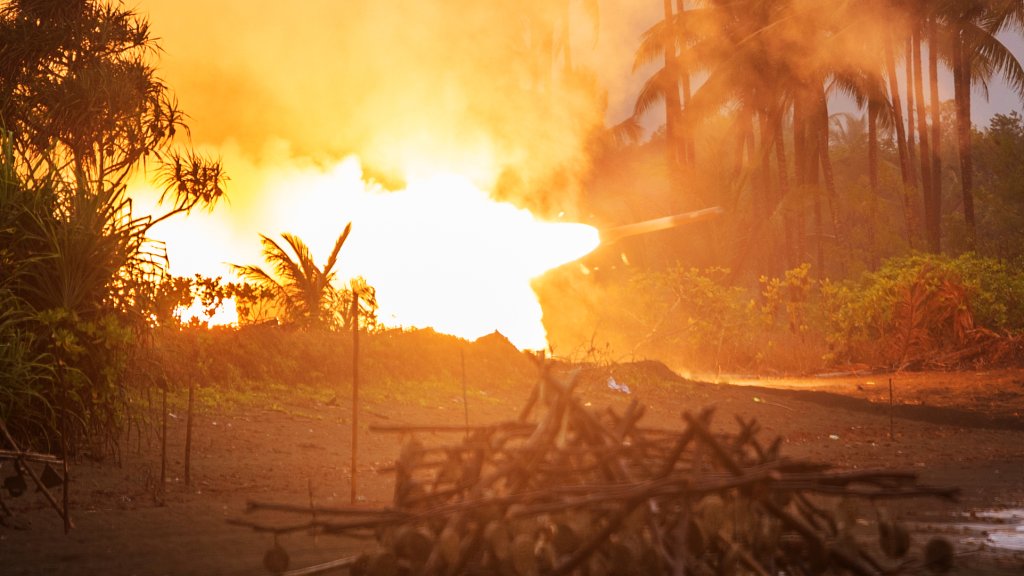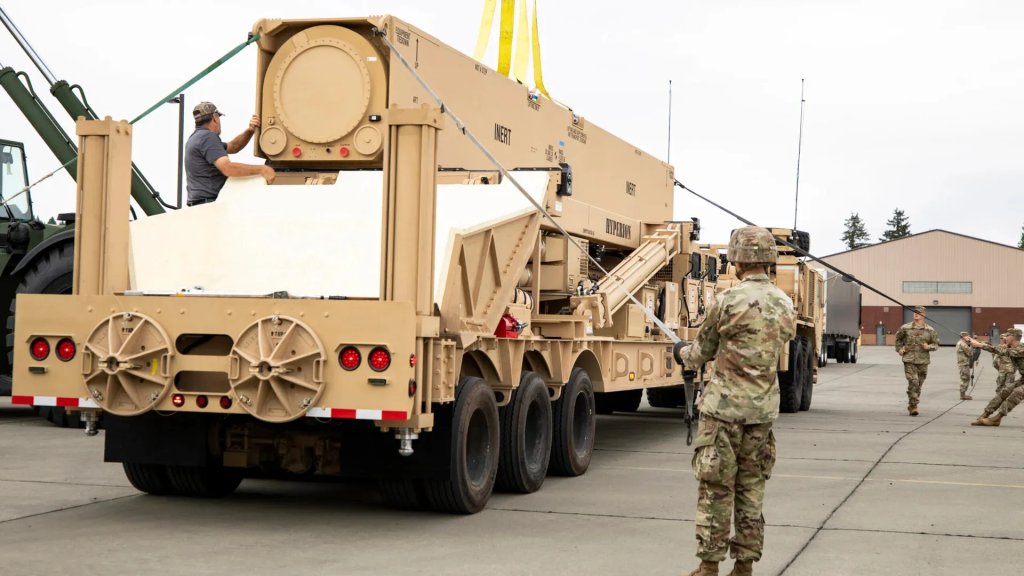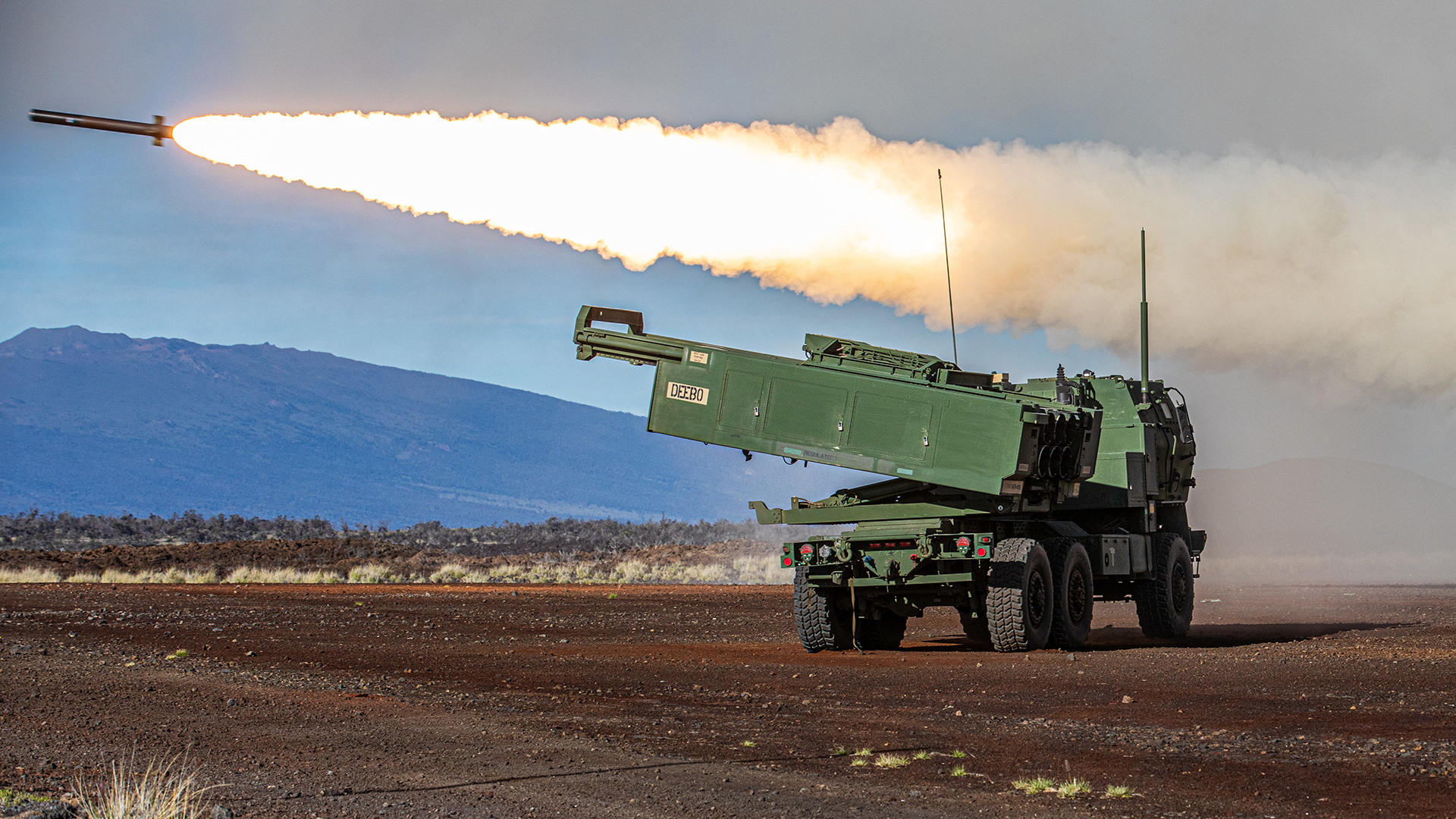If China invades Taiwan, U.S. Marine Corps units and their High Mobility Artillery Rocket System (HIMARS) would be rushed to southwestern Japanese islands near Taiwan and abutting the East China Sea, while a relatively new U.S. Army unit built in part to stop China from closing off the South China Sea would head to adjacent military bases in the Philippines.
That’s the gist of a report in the Japanese press over the weekend that offers a potential glimpse at how two components of U.S. missile forces would be rapidly arrayed to flank China should Beijing move to invade Taiwan. The anonymously sourced Kyodo News report fits with everything we previously understood about U.S. contingency planning in the region.
Kyodo’s report states that the missile unit deployment layout will be featured in a joint Taiwan contingency plan that the United States and Japan will finalize next month. It also comes as Tokyo has sought to shed decades of post-World War II pacifistic defense military policies in favor of a beefier military budget and a more active role in countering China’s ascendance.
If war breaks out, a U.S. Marine littoral regiment and its HIMARS contingent would head to Japanese island chains that abut the East China Sea, according to Kyodo, which does not specify the islands but reports that they are part of the Kagoshima and Okinawa prefectures. Kyodo did not name Marine units, but the 12th Marine Littoral Regiment is based out of nearby Camp Hansen, Okinawa.

Marine littoral regiments are a key piece of the service’s Force Design 2030, which seeks to make Marine units more autonomous, self-sufficient and agile should a war in the Pacific occur. Marines have already been using HIMARS during exercises in the region, including in the latest iteration of the Balikatan exercise in the Philippines this past May.
HIMARS can fire a single Army Tactical Missile System (ATACMS) missile or up to six artillery rockets without reloading. The artillery rockets include the M30/31 Guided Multiple-Launch Rocket System (GMLRS) variety, turning these projectiles into highly-precise rapid strike weapons. GMLRS has a range of around 50 miles, while the much larger and harder-hitting ATACMS can reach out 180 miles. The forthcoming Precision Strike Missile (PrSM) will replace the ATACMS, offering much greater range and eventually anti-ship capabilities, among other critical improvements. Extended Range GMLRS (ER GMLRS) will double the range of the current M30/31 guided rockets as well.
“From an early stage, when a Taiwan contingency becomes highly imminent, temporary bases will be set up on inhabited islands of the island chain, based on U.S. military guidelines for dispatching Marines in small formations to several locations,” Kyodo reported Sunday.
Japan’s Self-Defense Forces would largely play a support role, fueling and supplying the Marines, according to the report.
Meanwhile, in the South China Sea, U.S. Army units would deploy long-range fires from a Multi-Domain Task Force, Kyodo reports. That Army unit type was first stood up in 2017 and is tasked with challenging anti-access/area denial (A2/AD) defense from peer adversaries, namely China.

TWZ laid out what such units entail back in 2021:
“This MDTF is a testbed organization of sorts that is exploring how to integrate various advanced technologies, including new weapons and greatly improved networking capabilities, as well as associated tactics, techniques, and procedures, into future operations, especially against higher-end opponents, such as China or Russia. This unit set to receive the first operational battery equipped with the Army’s future Long Range Hypersonic Weapon, as well as a Mid-Range Capability Battery that could be equipped with land-based SM-6s and Tomahawks, or other weapons, such as Increment 2 PrSMs, depending on how the service proceeds in those development efforts.”
While more units of this type are in the works, the 1st Multi-Domain Task Force (MDTF) in particular would likely be tasked with the mission of running things from the Philippines. The first-of-its-kind command is based out of Joint Base Lewis-McChord, Washington, and is assigned to the Indo-Pacific.
Already, a Combined Information and Effects Fusion Cell (CIEFC) assigned to the 1st MDTF has been operating in tandem with the Philippines’ Northern Luzon command, according to the U.S. Army. That cell began working there during Balikatan 23, providing real-time maritime domain awareness. Since then, it has continued to operate out of Camp Aquino, “increasing bilateral maritime domain awareness and supporting Filipino humanitarian and disaster relief efforts,” the Army said in June.
The 1st MDTF is also the only unit sporting a Dark Eagle Long-Range Hypersonic Weapon (LRHW) battery, the Army said. That weapon is still in testing though.

The U.S. Army was busy rotating systems through the Philippines earlier this year. It sent elements of its new Typhon ground-based missile system there in April. Typhon can fire SM-6 multi-purpose missiles and Tomahawk cruise missiles, the former of which will work as a quasi-ballistic missile used for land and anti-ship attack strikes. Typhon’s arrival provided a glimpse of what’s to come as the service works to permanently base these systems in China’s backyard, TWZ previously reported.
The War Zone was not immediately able to confirm the details in the report, with Japanese officials not responding to requests for comment. A Pentagon spokesperson declined to comment on the article’s accuracy.
“We won’t speculate on what could happen and for operational security reasons, we won’t confirm how the United States would respond,” the spokesperson said. Philippine officials also declined comment.
If confirmed, Kyodo’s reporting underscores the importance of the U.S.-Japan alliance, and it reflects the practical manifestations of a 2023 agreement between Washington and Manila to increase the number of bases in the Philippines that American forces can operate from. Under that agreement, the island nation agreed to allow U.S. boots on nine installations, up from five.
As the U.S. watches and waits for what China may eventually do regarding Taiwan, the report reinforces the importance of alliances, and that America won’t be able to do everything it can if it doesn’t have friendly soil from which to operate.
Contact the author: geoff@twz.com
